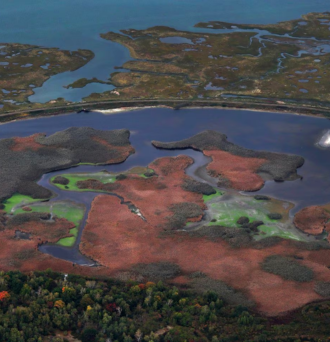
By: Scot Lehigh, Columnist
Back when he was a practicing lawyer who played a regular role in Boston campaign politics, Nathaniel Stinnett had one big frustration: Many Bostonians who called the environment their top priority simply didn’t show up to vote. As a result, politicians didn’t pay particular attention to environmental concerns, either as candidates or as elected officials.
Stinnett spent considerable time mulling that problem — and then, in the fall of 2015, started the Environmental Voter Project, a nonprofit focused on turning those voters out.
And not just in Boston. In 2022, the organization worked in 19 states, including purple locales like Pennsylvania, Georgia, Arizona, Colorado, Nevada, New Mexico, Virginia, North Carolina, New Hampshire, and Maine.
By Stinnett’s careful calculation, his group’s efforts increased turnout among low-propensity environmental voters by as much as 3.6 percent in primaries and 1.2 percent in general elections in the 2022 midterms. In Georgia, where EVP has been working since 2017, it has helped turn some 103,000 infrequent ballot-casters into high-propensity voters. In a state where the 2022 US Senate election was decided by fewer than 100,000 votes, that matters. In Arizona, where EVP has worked since 2019, about 110,000 of its targeted low-propensity voters are now consistent voters. That too is important in a state where the winning margin in the last gubernatorial election was less than 20,000 votes.
So how does the Boston-based Environmental Voter Project go about boosting turnout?
Start with what it doesn’t do. It’s not trying to change voters’ minds. Nor does it endorse candidates.
“Changing opinions is hard and expensive and messy, and who the hell knows how to do it?” Stinnett said in an interview. “Instead, we find the people who already care deeply about the environment yet aren’t voting, and turn them into consistent voters.”
Environmental Voter Project does that by encouraging its target population to vote in each and every election, no matter how minor.
Over the last eight years, his group has communicated with 9.5 million US citizens — and helped transform some of those infrequent voters into such conscientious citizens that 1.47 million have cast ballots in the most recent federal, state, and local elections.
EVP first does large-sample, one-question polls to identify voting-age adults who consider climate change or the environment a top concern. Then, working with data experts, it uses census, consumer, and other demographic information to create profiles of those voters. Those profiles might include, for example, that they drive electric vehicles or subscribe to exercise magazines or love the outdoors. Based on those models, EVP then assigns a score to every single registered voter in a state, predicting how likely they are to consider climate change or the environment their top political priority. Culling that pool to those whose probability score is 85 percent or above, EVP next checks voter rolls to see whether they vote regularly — and begins targeting those who don’t.
EVP contacts those low-propensity voters with calls, door-to-door canvassing, direct mail, digital advertising, and postcards, reminding them to vote. Such a person would typically receive at least three, and as many as 10, communications in any particular election.
But how can EVP confidently claim its efforts have increased turnout? Because once it has developed its pool of low-propensity, environmentally minded voters, the organization then leaves 20 percent of the group untargeted by voting messages. When the election is over, it compares the voting rates of the targeted group with the rates for the non-messaged control group.
What makes EVP’s efforts noteworthy, says campaign guru and former Massachusetts Democratic Party chairman John Walsh, is that most campaigns “only pay attention to you based on your voting history.” That means concentrating on likely voters, while giving short shrift to infrequent or irregular voters. By contrast, Stinnett and EVP help get those often-ignored potential voters involved in the process.
That’s an approach “with a lot of capacity” for hiking turnout, says Walsh, who ran US Senator Ed Markey’s come-from-behind 2020 Democratic primary victory over then US representative Joseph P. Kennedy II. Behind by 17 points at the start of the race, the Markey team used a simpler version of EVP’s approach as a tool to increase the turnout of both environmental voters and those ages 18 to 34, two pro-Markey campaign corrals.
It’s not just environmental voters or younger voters who could be the focus of such a broader effort. Although more research would have to be done, there might be potential with backers of gun-safety measures. Or with those who favor abortion rights but who, at least until the US Supreme Court erased the half-century-old constitutional right to abortion, hadn’t always been motivated to turn out.
Either way, the Boston-based Environmental Voter Project is making its own uniquely creative contribution to American politics.
